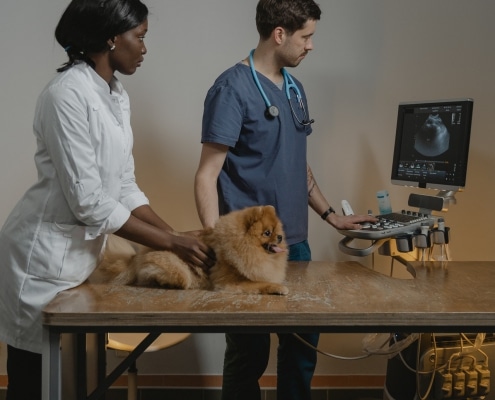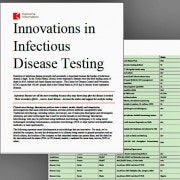Pets are Key to $3.5 Billion Veterinary Diagnostic Testing Market
“Companion animals (including dogs, cats, and horses) account for 70% of overall market, finds new report by Kalorama Information” – Kalorama Information
In the global veterinary diagnostic testing market, the companion animal segment (pets and domestic animals including horses) comprises almost 70% of the $3,540 million ($3.5 billion) overall market, with the food animal segment (livestock and production animals) accounting for the remainder. In coming years, the disparity between the two segments will only widen, according to The World Market for Veterinary Diagnostics, 5th Edition, a new report from medical market researcher Kalorama Information that forecasts the industry through 2026.
“At least in part, the catalyst for the upward trajectory of the companion animal segment is our love for our pets and began with choosing to be pet owners and pet parents in the first place. More pets means a greater need for pet products and pet care,” says Daniel Granderson, associate editor for Kalorama Information. “After all, the need for veterinary testing has grown over the last few years, as there are reportedly more companion animals with 70 percent of all households in the United States claiming at least one companion animal in the family in 2021.”
The companion animal diagnostics market includes in vitro diagnostic (IVD) products – instruments, consumables, test reagents and test kits – for the diagnosis of disease and health conditions in household pets (primarily dogs and cats) as well as horses (note: Kalorama’s analysis excludes medical imaging). Market performance is determined by diagnostic product demand from veterinary clinics, hospitals, reference labs, and governmental and research laboratories such as those found at universities and associated with government agricultural and animal health authorities. Test products performed by pet owners – such as pet blood glucose meters and strips, pregnancy and ovulation tests, and urinalysis strips and cups – are also included in the companion animal diagnostics market, but overall form a negligible share.
The primary sectors of the companion animal diagnostics segment include:
- Clinical chemistry analyzer systems (instruments and consumables)
- Infectious disease immunodiagnostics (analyzers, reagents, assays, and test kits)
- Non-infectious disease immunodiagnostics (reagents, assays, and test kits for endocrinal, digestive, autoimmune and other organ system conditions and disorders)
- Hematology analyzer systems (instruments and consumables for complete blood counts and differentials)
- Molecular diagnostics (reagents, reagent kits, test kits)
- And other analyzer systems
Modern veterinary care is heavily reliant upon conventional IVD technologies and methods also used in human medical care. Fewer regulatory impositions relative to medical care allows veterinarians to perform in-office testing (or near-patient testing) without certification. Today, many veterinarians are choosing to perform routine testing themselves, including clinical chemistry (panels of routine analytes to assess organ system health and animal wellness), hematology (complete blood count), critical care or point-of-care (POC) testing (blood gases, electrolytes, a handful of chemistry analytes), coagulation, urinalysis, and immunoassays for both infectious and non-infectious diseases. Many required tests still need to be outsourced or sent out to reference labs, including immunodiagnostic assays that are not readily interpretable (with an in-office reader or visual immunochromatographic results), microbiology cultures, histology tests, and molecular assays (PCR, genotyping arrays).
Analyzer automation and the introduction of ease-of-use features from the clinical space to veterinary diagnostics have enabled test in-sourcing. Many veterinary clinics and hospitals are now purchasing core lab analyzers – chemistry, hematology, routine immunoassays, urinalysis – to shorten turnaround times, initiate responsive care during the same visit, and generate additional revenue. Veterinary reference laboratories are able to sustain business by performing demanded esoteric testing in pathology (histology), microbiology, and immunology. In-clinic diagnostics is the key feature of the contemporary market, however, it has increased instrument placements, led to greater companion animal test volumes, and increased industry revenues for veterinary diagnostics vendors and companies.
For more insights like these or to purchase The World Market for Veterinary Diagnostics, 5th Edition visit: https://kaloramainformation.com/product/the-world-market-for-veterinary-diagnostics-5th-edition/.



